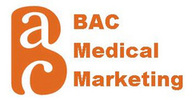In the early days of the web, many sites were created with the simple idea of establishing a presence on a new medium. Other sites were created with the idea of generating new business or fulfilling some other business function, but little was known about how people used the web and what strategies would maximize the effectiveness of a web site.
Eventually, web sites began to give more focus to attracting visitors and getting these visitors to take action. With a lack of detailed tracking, these marketing efforts were difficult to measure and adjust. The booming market in search advertising helped fuel the creation of modern analytics software which gave web sites the ability to segment their audience and truly evaluate their marketing campaigns. This not only gave advertisers a level of tracking unavailable in any other form of advertising, it also furthered the science of creating web sites by giving designers a better understanding of how to build sites for maximum effectiveness.
The future of the web will focus highly on action-oriented web sites which are tested and adjusted, over time, to maximize performance. Software is already available that allows for sophisticated methods of testing different designs, layouts, and text, ultimately determining what makes a website more effective.
We’re not at a stage where it is practical or cost effective for small businesses to conduct this level of testing and analysis, but clearly a lot has changed in how sites are created today based on what the past has taught us. By taking a fresh look at your old web site and defining a better strategy, determining the needs of your target market, and meeting those needs with strong calls to action, the finished product will be a site design which is better oriented toward achieving your goals.
Defining a strategy: What do you want your visitors to do?
If you’re currently thinking about a redesign, now would be a good time to take a fresh look at your existing web site and how it relates to your practice. Before even thinking about colors, layout, and content, you need to determine what you want your web site to do. What is the overall goal of your web site and what action(s) do you want visitors to take when they arrive?
If you have an insurance based practice then you may want to inform and educate existing patients. You may also want to encourage them to download patient history forms. For a marketing oriented practice, you most likely want to drive potential patients to contact you via telephone or a contact form. Determining the end result of what you want visitors to do will help ensure that your site focuses on directing people toward that action.
What are the needs of your target market?
Obviously the visitors to your web site have medical needs which direct them to research a procedure/treatment. What information do they need to explore before taking that next step in contacting you?
Examples:
Education on procedures & treatments * Comfort with your experience/credentials * Examples of your work (for cosmetic practices) * Testimonials * Financial information (insurances accepted, available financing, discount programs) * Contact information
The priority of these items can vary depending upon the target market, but potential patients will clearly want to seek out this information before contacting you. In most cases, the critical needs to fulfill revolve around demonstrating what makes you and your practice appealing, credible, and personal. By understanding these needs you can funnel your visitors into taking action.
Getting your visitors to take action
One part of the battle is getting people to come to your web site; the next part is getting them to take action. This is where you need to spell out what makes you different (unique selling proposition). Visitors to your site will most likely shop around and visit the sites of other practices. You need to show them what makes your practice special, whether it’s a unique approach to treatments, exceptional credentials, impeccable work, or special offers and unique financing arrangements.
If the goal of your web site is for potential patients to contact you, a special offer or promotion is a sure way of getting more people to take that step, especially if the offer has a timeframe that inspires people to ‘act now’. Even basic steps, like making your contact information more visible, can have a dramatic effect on the amount of contact you receive. Your phone number should be large and visible and repeated multiple times throughout each page of your site. The links to your contact form should stand out from the rest, and even better, you should have a small contact form on every page of your site. In most cases, the majority of people land on an interior page of the site, not the homepage, so consider that as well when placing a promotion or making a decision regarding the design of your site.
Ultimately, you have to find what’s right for your practice and your market; there is no one size fits all solution. The web is a living thing in a constant state of evolution and needs to be treated as such. Updating your site, on a regular basis, not only helps you keep up with these changing times, it can also have a dramatic effect on the new business it generates.
Moving Beyond A Brochure Web Site – How To Define A Strategy That Makes Your Visitors Take Action!5/15/2009
0 Comments
|
AuthorBruce A. Cadkin, MBA President BAC Medical Marketing Archives
October 2019
Categories
All
I'm an expert on Maven!
|

 RSS Feed
RSS Feed































